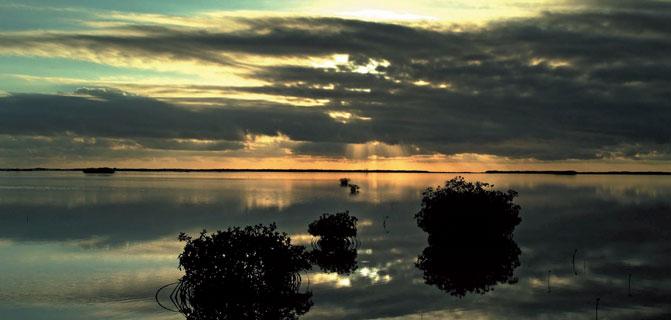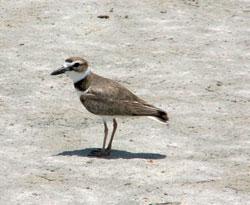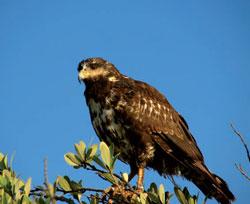
Las Salinas, a particularly beautiful area of some 2,000 square kilometres to the south of Matanzas Province, is considered by specialists a haven for Cuban birds.
The area's wetlands make the region an excellent refuge for more than 65 migrating species gathering during the winter season (October through March), when birds come to Las Salinas from North America looking for food and stay for their mating period.
 Ornithologists report the presence of such birds as the white pigeon (Columba Inornata), the small colourful Cuban Tody (Todus Multicolor), Cuba's national bird the tocororo or Cuban Trogon (Priotelus Temnurus), the mottled duck, the grey pelican and the kingfisher. There are also types of herons, and some, difficult to see in other places, like the Gundlachs Hawk and the stork.
Ornithologists report the presence of such birds as the white pigeon (Columba Inornata), the small colourful Cuban Tody (Todus Multicolor), Cuba's national bird the tocororo or Cuban Trogon (Priotelus Temnurus), the mottled duck, the grey pelican and the kingfisher. There are also types of herons, and some, difficult to see in other places, like the Gundlachs Hawk and the stork.
Flocks of cranes inhabit the grasslands, but the celebrity of the region is the pink Caribbean flamingo (Phoenicopterus ruber), with the greatest bird population in the territory.
Las Salinas is not known only for endemic or migratory birds. Its waters harbour fish like the bonefish (macabí) and the palometa, and the region is synonymous with stories and legends.
The Admiral came close
Las Salinas is in the Zapata Swamp, the largest marsh in the insular Caribbean, 180 kilometres southeast of Havana. Seen from the sea, it is left of Playa Girón, the historic Bay of Pigs where in April 1961, a force of 1,500 US-supported Cuban exiles were defeated when they tried to invade Cuba.
 According to historian Julio Amorío, Christopher Columbus came near Salinas during his second trip to the American continent, but the first to describe the area was Don Luís Juan Lorenzo DâClouet, founder of Fernandina de Jagua, today the city of Cienfuegos. DâClouet sent a letter to gueen Isabella I praising the virtues of the place for salt exploitation.
According to historian Julio Amorío, Christopher Columbus came near Salinas during his second trip to the American continent, but the first to describe the area was Don Luís Juan Lorenzo DâClouet, founder of Fernandina de Jagua, today the city of Cienfuegos. DâClouet sent a letter to gueen Isabella I praising the virtues of the place for salt exploitation.
Salt figured high in the area's commerce between the 16th and 18th centuries, including that of pirate and privateers. That same salt helped the Cuban patriots prepare and preserve their food during the 19th Century wars of independence against Spain.
An enigmatic character
Las Salinas is associated in the area with two different historic figures: Cazones and Brito, but it is Brito's name that is still recognized.
Back in 1930, José Brito Santos, customs delegate at Broa Cove, purchased Las Salinas, enlarged it and prepared the area to obtained salt by evaporating water from small ponds dug into the stone. It was later transported to marketing locations.
Brito raised a fortune allowing him to have a motorboat, a plane, landing strip, several trucks and at least two pleasant houses, one in Las Salinas and another at Playa Larga.
 There is a dark legend associated with a windowless cell with a very secure door and only a small skylight that Brito built next to his house in Las Salinas. According to legend, a brother of Brito who suffered from mental disorders was imprisoned there.
There is a dark legend associated with a windowless cell with a very secure door and only a small skylight that Brito built next to his house in Las Salinas. According to legend, a brother of Brito who suffered from mental disorders was imprisoned there.
The only witnesses remaining are the ruins of the house, some walls of the mineral storage area and the vestiges of the landing strip and pier.
Today, Las Salinas is an excellent bird watching site and a must-see during your tour of the Zapata Swamp.